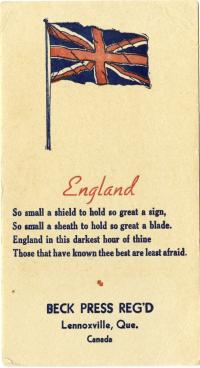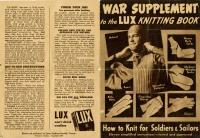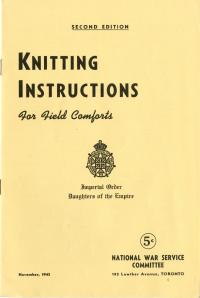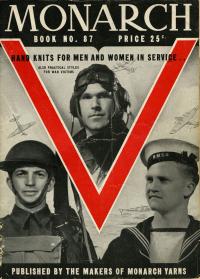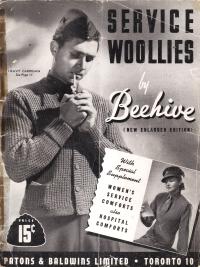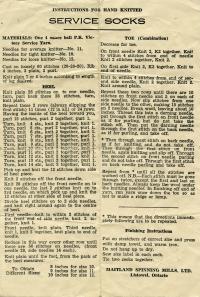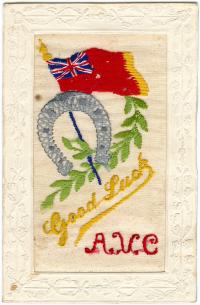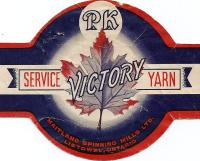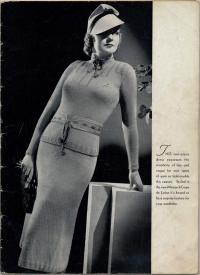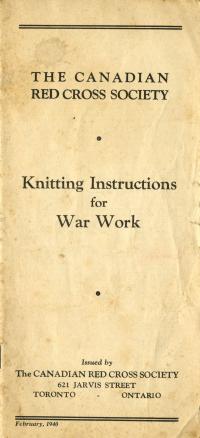Handicrafts
Support for England from Lennoxville, Quebec
This ink blotter, distributed by the Beck Press in Lennoxville, Quebec, featured a short poem with an optimistic and valiant tone to support England during wartime.
How to Knit for Soldiers and Sailors
This addition to the Lux Knitting Book was a War Supplement, concerned with instructing readers how to knit garments useful to those serving at the front. In this guide there are instructions for knitting helmets, sleeveless pullovers, rifle mittens, and heavy-duty socks,
Knitting Instructions for Field Comforts
A guide to knitting field comforts for members of the military - such as scarves, socks, turtlenecks, and pullovers. It also teaches readers how to knit more specialized items like a ribbed balaclava helmet, gunner's and observer's half mitts, and steel helmet caps.
Knitting for Victory
This craft book included a long list of women's war charities in Canada, and patterns for every conceivable garment for men and women in uniform, as well as "practical styles for war victims."
Clothes for the fashionable soldier ...
Knitting was an enormously popular activity for volunteers, with books such as this one providing patterns for everything from steel helmet caps to amputation covers.
Knitting socks for soldiers
One only has to read their letters and diaries to see how important socks were to soldiers, and it was just as important to Canadians to be able to supply them. The fact that this knitting instruction sheet, preserved by Charlotte Halls of Winnipeg, Manitoba, is so well worn suggests that it was used frequently, and perhaps passed through many hands during the Second World War.
Crafts from the front
Silk postcards were very popular souvenirs for soldiers during the First World War, and provided an important source of income for French and Belgian handicraft workers.
Knitting socks for soldiers
The label confirmed that "There is sufficient yarn in this ball to knit one pair of service socks."
Knitting for style and thrift
Monarch Knitting Company was one of Canada's largest textile firms. Their pattern magazines afforded wartime families the opportunity to sew their own clothing from scratch or recycled fabric, while still staying trendy.
"Knitted articles for all branches of the service"
In successive editions of this pamphlet, it is possible to see changing understandings of what men and women in uniform needed in the way of knitted articles.

